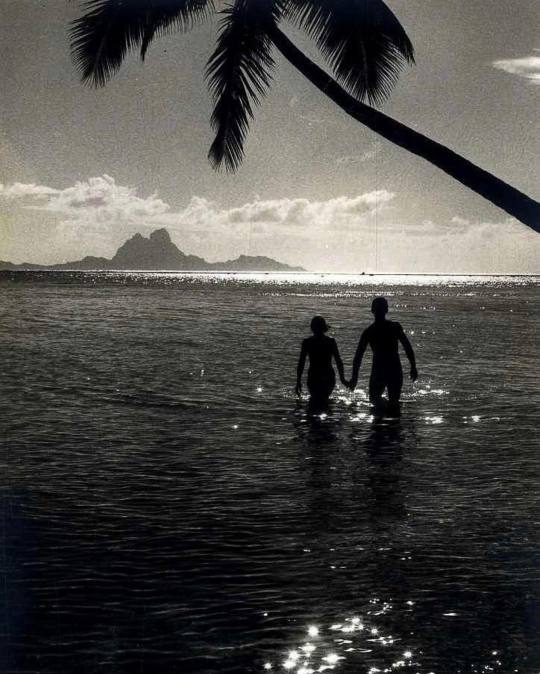#1960s tahiti
Photo
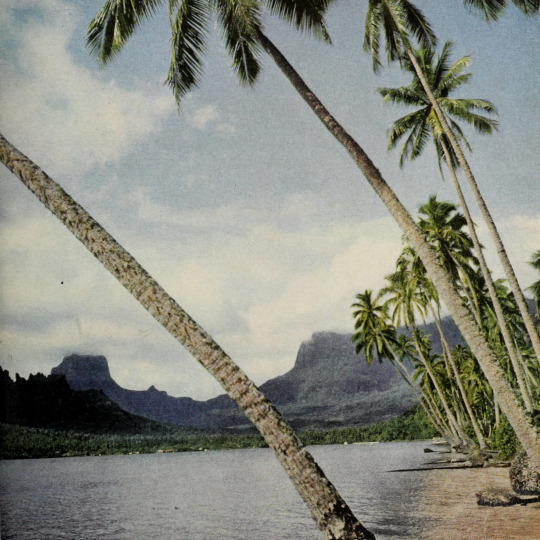
Tahiti. Sunset. March 1964.
Internet Archive
1K notes
·
View notes
Text

A Tahitian woman walking her horse through the jungle | Eliot Elisofon | The LIFE Picture
85 notes
·
View notes
Text
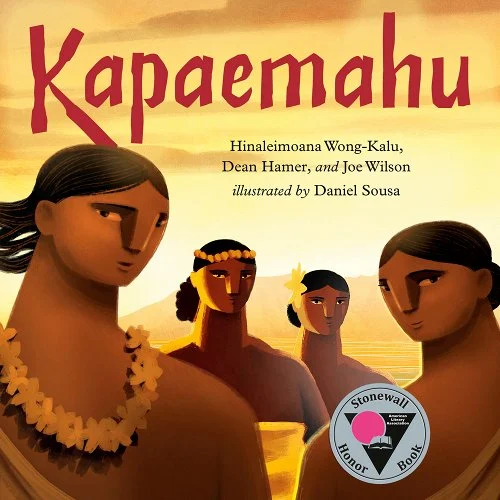
Kapaemahu
Hinaleimoana Wong-Kalu (Author) Dean Hamer (Author) Joe Wilson (Author) Daniel Sousa (Illustrator)
In the 15th century, four Mahu sail from Tahiti to Hawaii and share their gifts of science and healing with the people of Waikiki. The islanders return this gift with a monument of four boulders in their honor, which the Mahu imbue with healing powers before disappearing. As time passes, foreigners inhabit the island and the once-sacred stones are forgotten until the 1960s. Though the true story of these stones was not fully recovered, the power of the Mahu still calls out to those who pass by them at Waikiki Beach today. With illuminating words and stunning illustrations by Hinaleimoana Wong-Kalu, Dean Hamer, Joe Wilson, and Daniel Sousa, KAPAEMAHU is a monument to an Indigenous Hawaiian legend and a classic in the making.
(Affiliate link above)
521 notes
·
View notes
Photo

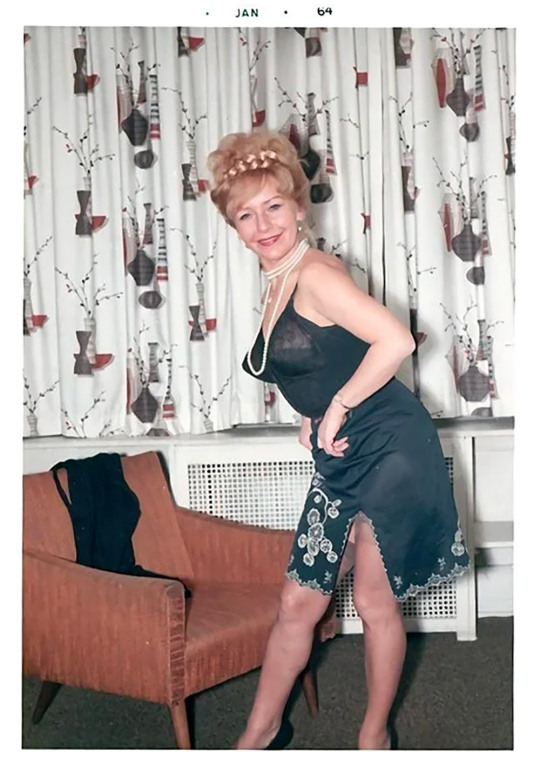
Fremont Hotel, 1960s. Downtown Las Vegas.
Tahiti Motel, January 1964. Las Vegas Strip.
Slide scan from Charles Phoenix, and snapshot scan from Frosty.
71 notes
·
View notes
Photo

One of Raivavae's tiki at the Museum of Tahiti in Mamao, circa 1960
57 notes
·
View notes
Text

Sydney, Circular Quay c1974. This postcard can be dated to just one day; as the French cruise liner S.S. France made only one visit to Sydney, on February 16, 1974. In this lovely scene, SS France can be seen in company with some of Sydney's ferry and bus fleets including 'Kanangra' in the foreground, 'South Steyne' at extreme left and 'Baragoola' in Sydney Cove, and is that 'Proclaim' behind the 'Kanangra'? The buses at East Circular Quay include a green & cream 'underfloor' from the mid-1950s and two second series Leyland Leopards in the PTC blue and ivory livery.
SS France was launched on May 11, 1960. She became the longest Trans-Atlantic liner at 1,035 ft and after being fitted out, departed on on her first voyage in January, 1962; a cruise from Le Havre to the Canary Islands. On February 3, 1962 she departed on her maiden Trans-Atlantic crossing from Le Havre to New York, although by this time jet aircraft were regularly flying between Europe and New York, making the sea voyage virtually obselete. French pride and government subsidies kept her going throughout the 1960's and into the early 1970's.
On January 9, 1974, SS France departed New York on a world voyage. Because she was too long for the Panama Canal locks, she sailed south via Cape Horn then visited Papeete (Tahiti), Auckland, and Wellington before making her way to Australian waters. The cruise was to have called at Hobart, but this was cancelled at the last minute due to her length and she arrived in Sydney with great fanfare on February 16. She returned to New York via South Africa.
Following the Australian visit, SS France resumed trans-Atlantic sailings, but it wasn't to last. Subsidies from the French Government were withdrawn in mid-1974 and the vessels final Atlantic crossing was in September 1974.
3 notes
·
View notes
Photo


The High Flying Mathies Sisters:
Rita and Charlene
@ Tahiti Beach
in Coral Gables, Florida
c.1960's
Image by Bunny Yeager
46 notes
·
View notes
Text
HAWAI`I MUSEUM REVISITS HISTORY OF GENDER-FLUID HEALERS

Associated Press - July 7, 2022
HONOLULU (AP) — More than 500 years ago, Hawaiians placed four boulders on a Waikiki beach to honor visitors from the court of Tahiti’s king who had healed the sick. They were “mahu,” which in Hawaiian language and culture refers to someone with dual male and female spirit and a mixture of gender traits.
The stones were neglected for many years, as Christian missionaries and other colonizing Westerners suppressed the role of mahu in Hawaiian society. At one point a bowling alley was built over the boulders.
Officials restored the stones multiple times since the 1960s but informational plaques installed next to them omitted references to mahu.
The stones and the history of the four healers now are featured in an exhibit at Bishop Museum in Honolulu. The display highlights the deep roots of gender fluidity in Polynesia.
Hinaleimoana Wong-Kalu is mahu and one of the exhibit’s curators. She said the healers were revered for their skill and hopes their story will show children in Hawaii that “proper Hawaiian culture” doesn’t pass judgment against those “who have elements of duality.”
“They were respected and honored because the people knew that their male and female duality made them even more powerful a healer,” Wong-Kalu said.
Kapaemahu was the leader of the four healers, and the exhibit is named The Healer Stones of Kapaemahu. Their story was passed down orally, like all Hawaiian stories, until a written language was developed in the 1800s.
But Hawaiians were discouraged from talking about mahu. DeSoto Brown, a Bishop Museum historian and the exhibit’s lead curator, said Christian missionaries who arrived in 1820 forbade anything that deviated from “clearly defined roles and presentation” of male and female genders.
The earliest known written account of the mahu healers is a 1906 manuscript by James Alapuna Harbottle Boyd, the son-in-law of Archibald Cleghorn, who owned the Waikiki property where the stones were at the time. Cleghorn’s wife, Princess Likelike, and daughter, Princess Kaiulani, were known to place seaweed and offer prayers at the stones when they swam.
Boyd’s manuscript “Tradition of the Wizard Stones of Ka-Pae-Mahu” said the Hawaiian people loved the healers for their “tall stature, courteous ways and kindly manners” and their cures became famous across Oahu.
“Their ways and great physique were overshadowed by their low, soft speech, and they became as one with those they came in contact with,” Boyd wrote. “They were unsexed, by nature, and their habits coincided with their womanly seeming, although manly in stature and general bearing.”
When it was time for the healers to leave, four boulders were brought down from Oahu’s Kaimuki area. Two were placed at the site of the healers’ hut and the others where they bathed in the ocean. Idols indicating the dual spirit of the healers were placed under each stone.
Many Hawaiians grew up not knowing about Hawaiian concepts of mahu or the stones because the American businessmen who overthrew the Hawaiian monarchy in 1893 banned Hawaiian language instruction in schools and discouraged speaking it in homes. Generations of Hawaiians lost connections to cultural traditions.
Wong-Kalu, 50, said as a child she was made to believe mahu was a derogatory word. She remembers being among those who would sit on the stones and drape towels over them after swimming, oblivious to their significance.
Mahu are akin to “two-spirit” common in many Native American cultures, Wong-Kalu said, adding there are physical, emotional, mental and spiritual elements to being mahu. The representation of male and female depends on the person, she said.
“In Hawaii, one could exist really in the middle,” she said.
The stones nearly were lost just before the 1941 Japanese attack on Pearl Harbor. At the time, the Honolulu Star-Bulletin reported the boulders would be blasted or removed after a developer leased Cleghorn’s property to build a bowling alley.
Following an outcry, plans emerged for a concrete walkway between the stones. But the developer instead built over them.
The stones were uncovered two decades later when the city tore down buildings to build a public beach park. Elders recalled the story of the stones and urged they remain. The city agreed and created a plaque that mentioned the Tahitian healers but didn’t say anything about them being mahu.
In 1997, the city fenced off the stones and dedicated a new plaque. It also didn’t reference mahu.
During both periods, waves of homophobia and transphobia washed over Honolulu. In the 1960s, a new state law prohibited cross-dressing and police forced drag performers to wear a button saying: “I Am A Boy.” Three decades later, there was backlash in Hawaii and nationally when the Hawaii Supreme Court sided with same-sex couples seeking the right to marry.
The Bishop Museum exhibit, on display through Oct. 16, recounts this history and displays artifacts like massage sticks and a medicine pounder that healers would have used centuries ago. Islander concepts of gender fluidity are explored through stories like that of King Kamehameha III and his male lover.
A map shows terms used in Polynesia for those who don’t identify as male or female, including “fa’afafine” in Samoa and “leiti” in Tonga.
Dean Hamer and Joe Wilson helped curate the exhibit and hope it will spur the city to tell the full story of the mahu at the site of the stones.
Ian Scheuring, spokesperson for Honolulu Mayor Rick Blangiardi, said the city is researching the issue and local leaders plan to meet with members of the LGBTQ and Native Hawaiian communities to learn how they can help tell the “true and complete” story of the healers.
Tatiana Kalaniopua Young, a Native Hawaiian anthropologist, mahu and a director of the Hawaii LGBT Legacy Foundation, said the story the stones and healers helped her family understand that she was not “this weird creature that’s outside of the norm.” And that in a Hawaiian sense, she was part of the norm.
“It gave me a sense of place and purpose as a mahu and it really made me proud to be Kanaka Maoli, or Native Hawaiian,” she said.
7 notes
·
View notes
Link
Check out this listing I just added to my Poshmark closet: Jeffrey Campbell Shoes Womens 9.5M Kid Suede German Soul Ankle Strap Chunky Heel.
0 notes
Photo

Tahitian swimmer and tropical fish. Sunset. October 1967. Tahiti Tourist Board ad detail.
Internet Archive
266 notes
·
View notes
Text
On this day in Wikipedia: Saturday, 22nd July
Welcome, שלום, أهلا وسهلا, Willkommen 🤗
What does @Wikipedia say about 22nd July through the years 🏛️📜🗓️?

22nd July 2022 🗓️ : Death - Maria Petri
Maria Petri, English association football supporter (b. 1939)
"Maria Petri (1 March 1939 – 22 July 2022) was an English Arsenal supporter. She had been attending Arsenal and Arsenal Women matches constantly since 1950 until her death on 22 July 2022 and had been recognised within English football for her unique chants...."
22nd July 2018 🗓️ : Death - Frank Havens (canoeist)
Frank Havens, American canoeist (b. 1924)
"Frank Benjamin Havens (August 1, 1924 – July 22, 2018) was an American sprint canoeist who competed from the late 1940s to the early 1960s. He was born in Arlington, Virginia. Competing in four Summer Olympics, he won two medals in the C-1 10000 m event with a silver in 1948 and a gold in 1952. In..."
22nd July 2013 🗓️ : Event - 2013 Dingxi earthquakes
Dingxi earthquakes: A series of earthquakes in Dingxi, China, kills at least 89 people and injures more than 500 others.
"On 22 July 2013, a series of earthquakes occurred in Dingxi, Gansu. The first quake struck at 07:45 China Standard Time with an epicenter located at the border of Min County and Zhang County. The magnitude of the initial earthquake was placed at Ms 6.6 by the China Earthquake Data Center with a..."

Image by USGS
22nd July 1973 🗓️ : Event - Pan Am Flight 816
Pan Am Flight 816 crashes after takeoff from Faa'a International Airport in Papeete, French Polynesia, killing 78.
"Pan Am Flight 816 was an international flight from Auckland, New Zealand, to San Francisco, California, via Tahiti, French Polynesia and Los Angeles. It was operated by a Pan Am Boeing 707-321B bearing the registration N417PA and named Clipper Winged Racer. On July 22, 1973, at 10:06 P.M. local..."

Image licensed under GFDL 1.2? by Mike Freer
22nd July 1923 🗓️ : Birth - The Fabulous Moolah
The Fabulous Moolah, American wrestler (d. 2007)
"Mary Lillian Ellison (July 22, 1923 – November 2, 2007) was an American professional wrestler better known by her ring name The Fabulous Moolah. She began her career working with promoter Billy Wolfe and his wife, wrestler and trainer Mildred Burke, as well as working alongside professional..."

Image by This work is in the public domain in the United States because it was published in the United States between 1928 and 1977, inclusive, without a copyright notice. For further explanation, see Commons:Hirtle chart as well as a detailed definition of "publication" for public art. Note that it may still be copyrighted in jurisdictions that do not apply the rule of the shorter term for US works (depending on the date of the author's death), such as Canada (50 p.m.a.), Mainland China (50 p.m.a., not Hong Kong or Macao), Germany (70 p.m.a.), Mexico (100 p.m.a.), Switzerland (70 p.m.a.), and other countries with individual treaties.
22nd July 1820 🗓️ : Birth - Oliver Mowat
Oliver Mowat, Canadian politician, 3rd Premier of Ontario, 8th Lieutenant Governor of Ontario (d. 1903)
"Sir Oliver Mowat (July 22, 1820 – April 19, 1903) was a Canadian lawyer, politician, and Ontario Liberal Party leader. He served for nearly 24 years as the third premier of Ontario. He was the eighth lieutenant governor of Ontario and one of the Fathers of Confederation. He is best known for..."

Image
22nd July 🗓️ : Holiday - Christian feast day: Abd-al-Masih
"Abd al-Masih (or Abda) was a Jewish Christian martyr and saint of Late Antiquity. The name Abd al-Masih (عبد المسيح) means "servant of the Messiah" in Arabic and is a posthumous title, not his name. Abd al-Masih, born Asher ben Levi was a converted Jewish shepherd boy in Sassanian Mesopotamia who..."
0 notes
Photo

#TurntableThursday Tamouré A Tahiti early 1960s 🗿🌴📀🎶 #tiki #exoticmoods #polynesianpop #exoticamusic #albums #vinyl #exotica #music #tahitianmusic https://www.instagram.com/p/Cp39FpjOKp_/?igshid=NGJjMDIxMWI=
#turntablethursday#tiki#exoticmoods#polynesianpop#exoticamusic#albums#vinyl#exotica#music#tahitianmusic
1 note
·
View note
Text
NO REASON TO CONSIDER CHANGING MALLORY SQUARE’S NAME…..NOT NAMED AFTER STEPHEN MALLORY
NO REASON TO CONSIDER CHANGING MALLORY SQUARE’S NAME…..NOT NAMED AFTER STEPHEN MALLORY - https://keywestlou.com/no-reason-to-consider-changing-mallory-squares-name-not-named-after-stephen-mallory/Serious discussions concerning renovating/updating Mallory Square are taking place. The issue of the area's name has become part of the discussions. Should the name be changed. Stephen Mallory was a Confederate successionist who served as the Confederacy's Secretary of the Navy. My son in law Corey Malcom solved the problem. Corey is a brilliant historian. Tom Hambright described him as a "world class historian." The description befits him. Corey is an archeologist by education. Early on worked in the Middle East. Served as the Mel Fisher Maritime Museum's Director of Archeology for more than 30 years. Now Hambright's successor as Monroe County Historian. He is acknowledged and respected as the world authority re Spanish wrecks and slave ships. Along the way, he earned a Doctorate from England's University of Huddersfield. I dwell initially on Corey's background and talents not because he is my son in law. Though I take pride in it. I dwell on his background because what he has discovered will surprise everyone: Mallory Square is NOT named after the secessionist Stephen Mallory. Corey did some digging and discovered a 1961 letter from the Chairman of the Old Island Restoration Foundation, one of Key West's first historic preservation groups. Key West purchased the "Clyde-Mallory Docks" in 1952, but a plan for the area was not realized till 1960 when the Foundation began pushing for a restoration that highlighted the history of the docks. The Foundation took the lead in the transformation to "Mallory Square" which opened in 1961. The Foundation's Chairman Reta Savage wrote, "We have by unanimous decision named the area 'Old Mallory Square' in honor of the Clyde-Mallory Steamship Line." Corey reported Sawyer went on to make a prescient observation: "Needless to say when the dock and fishing pier are finished it will certainly be an attraction to the tourists." Good job, Corey! You saved Key West from some serious conflict re a name change. Corey's report can be read on a Monroe County Public Library, Florida Keys History Center, Facebook entry posted 12/19 titled "Who Is The Mallory Of Mallory Square? The Answer Is In The Archive." It is already Christmas in Tahiti, New Zealand and Australia. Less than 24 hours from now, it will be in Key West. An early Merry Christmas to one and all!
1 note
·
View note
Photo
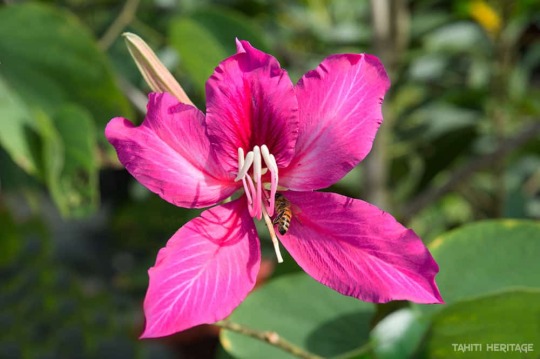
Bauhinia, the purple orchid tree
The Bauhinia is a very ornamental small tree with its large, fragrant purple flowers that look like orchids. It is native to southern China and Southeast Asia and arrived in Tahiti at the end of the 1960s. Different common names have been given to it in reference to its flowers – purple bauhinia and orchid tree – or to the shape of its leaves – Camel 's foot and Butterfly tree .
The botanical genus Bauhinia, characterized by simple two-lobed leaves, takes its name from the brothers Johan and Gaspard Bauhin, 15th century Franco-Swiss naturalists who were united by the same passion for Botany.
The magnificent flowers of 2.5 to 4 cm in diameter are pleasantly fragrant. They consist of five petals in shades of purple, pink and lavender, one of which is variegated with dark carmine and three functional stamens. The plant has the particularity of ejecting its seeds about ten meters away.
23 notes
·
View notes

